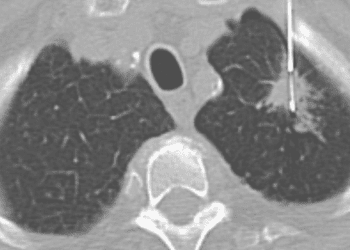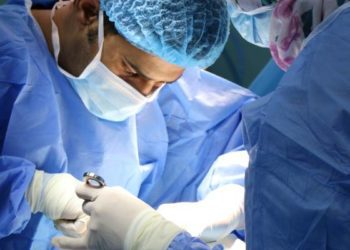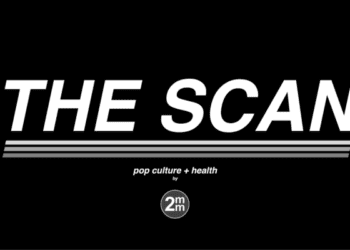2 Minute Medicine Rewind August 8, 2022
School Readiness Among Children Born Preterm in Manitoba, Canada
1. In this cohort study, preterm children were more likely to be not school ready in kindergarten compared to children born full term as measured by the Early Development Instrument tool
Evidence Rating Level: 2 (Good)
Preterm children are at risk for neurodevelopmental challenges such as learning disabilities. School readiness can be assessed using the Early Development Instrument (EDI) tool, which includes 5 domains (physical health and well-being, social competence, emotional maturity, language and cognitive development, communication skills and general knowledge). In this cohort study, 4353 preterm children (gestational age <37 weeks) were compared to 58 925 full term children (gestational age > 37 weeks). Children born preterm had differences in their baseline characteristics including being less likely to be born by caesarean delivery and to mothers who had diabetes, were smokers and were receiving income assistance, and more likely to be entered into Child and Family Services care. Adjusted outcomes in this population cohort showed 35% of preterm children to have vulnerable EDI scores compared to 28% of full-term children (adjusted odds ratio [AOR], 1.32; 95% CI, 1.23- 1.41; P < .001]), including a dose response among preterm children (higher percentage of those being born at earlier gestational age being vulnerable in any EDI domain). The least affected domains were found to be social competence and emotional maturity. A secondary analysis was done on a sibling cohort, which included children born preterm and their closest in age sibling. 1296 of the 4352 preterm children had a full term born sibling. Similar EDI vulnerability were seen between preterm children and their full term siblings in most domains with the exception of vulnerability in the communication skills and general knowledge EDI domain (AOR, 1.39; 95% CI, 1.07-1.80). Strengths of this study include using the EDI tool in a larger cohort which allowed data to be collected in a natural environment over an entire school year. Limitations to the study include small population size, and social determinants as confounding variables. Overall, in the population cohort, preterm children had a lower rate of school readiness compared to full term, with no differences seen in the sibling cohort.
Associations between gestational age and childhood sleep: a national retrospective cohort study
1. In this cohort study, children have a significantly worse sleep than full-term children as measured by the Children’s Sleep Habits Questionnaire
Evidence Rating Level: 2 (Good)
It is suggested that 20-30% of young children have sleep problems, including more prevalent problems in preterm infants under than age of 1. Beyond infancy, the relationship between preterm birth and sleep problems is not well studied. A retrospective cohort study was done in a sample of urban Chinese children to understand the effect of gestational age on sleep outcomes. Groups in the study included very preterm (<31 weeks), moderate preterm (32-33 weeks), late preterm (34-36 weeks), early term (37-38 weeks) and post term (41 weeks). 114, 311 children aged 3-5 years old were included in the final analysis of the study. Sleep outcomes were measured using the Children’s Sleep Habits Questionnaire (CSHQ) with a higher score indicating more sleep difficulties. Scores of 41 or more indicate a pediatric sleep disorder. Independent variables included gestational age, covariables included a range of family, child and maternal characteristics. Very-preterm, moderate preterm, late-preterm and postterm were associated with higher CSHQ scores (β = 1.827, 1.409, 0.832, and 0.831 respectively, each p<0.001, p correction<0.00), as well as other sleep problems including shorter daily sleep hours compared to full-term peers. This study is unique in its examination of a full range of gestational ages, from preterm to post term. Limitations include the inability to include all covariants. Overall, the study found that pre-term, early-term and post-term birth had a negative affect on sleep.
1. The risk of severe maternal morbidities associated with SARS-CoV-2 infection where higher when the Delta variant was predominant (July 2021-November 2021)
Evidence Rating Level: 2 (Good)
Over 170,000 pregnant people were infected by SARS-CoV-2 between January 2020 and February 2022, with 29,000 of them being hospitalized with COVID-19. Pregnancy is possible associated with worsened maternal outcomes with SARS-CoV-2. Several variants were identified during the pandemic, characterizing different waves. This retrospective cohort study evaluated the association between SARS-CoV-2 infection and severe maternal morbidities (SMM) in pregnant patients when different strains of SARS-CoV-2 predominated including: wild-type or Alpha (B.1.1.), Delta, or Omicron (B.1.1.529). SMM are defined as unexpected outcomes of labour and delivery that consist of 21 health indicators resulting in both short- or long-term consequences to one’s health. The study population consisted of pregnant patients in 32 hospitals spanning over 8 US states. The primary outcome was any SMM event during hospitalization for delivery, with secondary outcomes including number of SMM events, respiratory SMM, nonrespiratory SMM and nontransfusion SMM. The final study population included 3129 patients with SARS-CoV-2 and 12 504 patients without any evidence of infection. Higher rates of any SMM event were seen in those with SARS-CoV-2 than those without in all periods except for Omicron. The risk was similarly increased for wild-type strain and alpha variant periods, with the highest risk in the Delta period (70 patients [10.3%] vs 55 patients [1.5%]; OR, 7.69 [95% CI, 5.19-11.54]; P for trend < .001). This pattern was also consistent for nonrespiratory complications and nontransfusion complications. This study is unique in its analysis of adverse events specifically at time of delivery, while comparing 4 strains. Limitations include inability to account for vaccination status and not having all patients during the time of the wild-type strain undergoing testing for infection. In conclusion, the cohort study found an association of infection with SARS-CoV-2 and higher rates of SMM, with a stronger association with the Delta strain.
Antibodies in the breastmilk of COVID-19 Recovered Women
1. SARS-CoV-2 IgA and IgG antibodies are present in the breastmilk of COVID-19 recovered women
2. Neither presence of symptoms nor time since positive SARS-CoV-2 test were found to be independent predictors affecting antibody concentration in milk
Evidence Rating Level: 2 (Good)
Newborn infants are an at-risk population who are unable to get SARS-CoV-2 vaccines due to their immature immune systems. It is well known that passive immunity can come from maternal milk for the prevention of various diseases, and previous studies have reported human milk as a source of maternal SARS-CoV-2 antibodies. The relative concentrations of these antibodies in milk however, have not been studied. This retrospective cohort study investigated the concentrations of SARS-CoV-2 IgG and IgA in human milk and serum using Enzyme Linked ImmunoSorbent Assay (ELISA) of blood serum and human milk from patients who had recovered from COVID-19 in pregnancy and those who had COVID-19 during time of delivery. Patients had PCR confirmed coronavirus infection during pregnancy or during delivery and lactation. Women with no history of COVID-19 served as controls. All women were discharged home, with no acute symptoms of infection and with n maternal or neonatal deaths due to infection. Maternal blood and breast milk samples were collected. Former virus exposure was highly associated with the prevalence and level of anti- SARS-CoV-2 IgG and IgA antibodies in breastmilk (p <0.001), with concentrations of anti- SARS-CoV-2 IgA antibodies than IgG. No statistically significant difference between antibody levels were seen between symptomatic and asymptomatic women, additionally, no statistically significant correlation was seen between time since positive SARS-CoV-2 test and level of antibody in the timespan studied (up to 229 days). Overall, this study found that SARS-CoV-2 IgA and IgG antibodies are present in human milk in women who had COVID-19 throughout pregnancy or at time of delivery and can last up to 9 months. Future studies can be done to evaluate the protective capacity of human milk against SARS-CoV-2.
1. Same appointment mammogram results had a positive impact on breast cancer screening experience among 48% of patients, however this was not statistically significant
Evidence Rating Level: 2 (Good)
Breast cancer screening, although beneficial, is associated with anxiety and psychological stress. Annual screening is recommended for women in the US at age 40 for those of average risk, and 30 for those of high risk. Previous studies have reported that personal experience is an important incentive towards screening compliance. This quality improvement survey analysis involved 185 patients who opted for screen day results, with the attempt to reduce breast cancer screening related anxiety and result wait times. The patients served as their own controls and completed a survey that focused on various aspects of patient satisfaction, comparing their same day result appointment with prior appointments when they did not receive same day appointment results. With same day results, 47% of patients reported no difference in their screening experience, 5% reported a worse experience and 48% reported improvement in their screening experience, the increase in satisfaction was not statistically significant. Limitations to this study include comparing to prior appointments which may have led to recall bias, only on center was used which may not have been representative of all patient populations, and no other information was collected to identify confounding variables. Future studies may be needed to further investigate whether same day appointment results can increase patient satisfaction, reduced anxiety and distress and possibly lead to increased compliance in breast cancer screening.
Image: PD
©2022 2 Minute Medicine, Inc. All rights reserved. No works may be reproduced without expressed written consent from 2 Minute Medicine, Inc. Inquire about licensing here. No article should be construed as medical advice and is not intended as such by the authors or by 2 Minute Medicine, Inc.







![The ABCD2 score: Risk of stroke after Transient Ischemic Attack (TIA) [Classics Series]](https://www.2minutemedicine.com/wp-content/uploads/2013/05/web-cover-classics-with-logo-medicine-BW-small-jpg-75x75.jpg)